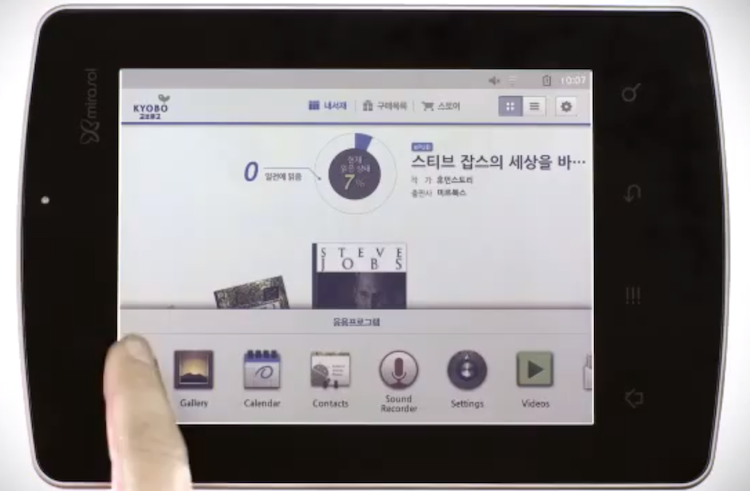
The smartphone has faced countless improvements over the past year, largely in terms of both hardware and software. Some of the biggest improvements have come in the form of faster, multi-core processors, higher quality and resolution displays, better cameras and faster wireless capabilities, all jam-packed in a smaller, more lightweight chassis. Through all of this, as I feel I have stated a million times, only one thing has been left to take a hit: battery life.
Along the way, component manufacturers have managed to create technologies or stitch together methods that "help save" battery life. But let's be honest, none of these work quite as well as simply having a higher capacity or more efficient power cell. There have been several breakthroughs as of late in the battery technology field. However, none of them have managed to make it to fruition just yet.
So for now, while engineers and scientific brains are in the labs working on mass producing cells that last tens to hundreds of times longer on a single charge than current batteries, the best – and only – thing OEMs can do is to continue shaving off battery usage here and there with more efficient components. A prime example of this is in displays of the OLED family. Unlike LCDs, which supply power to every pixel any time the display is lit, OLED displays only power the pixels that require power. In other words, blacks appear to be a truer black because those pixels are actually powered off, only to be kicked on when that pixel is needed for color. Thus, using primarily black wallpapers and black accents in the interface of the phone saves, albeit minuscule, power over time.
As reported by Taylor Wimberly of Android and Me, Qualcomm MEMS Technologies, Inc. has been hard at work on a new display technology that uses much less power than your run-of-the-mill display. The product has been dubbed Mirasol and is "the industry's first to use interferometric modulation (IMOD), which is a micro-electro-mechanical systems-based technology able to create color from ambient light." In human terms, it saves power and lots of it.
The first Mirasol fitted Android device, a Kyobo eReader, is now available in South Korea for roughly KRW 349,000 (or $310 USD), or a discounted price of KRW 299,000 ($265 USD) for Platinum Book Club members. It features a 5.7-inch XGA (1024 by 768 pixels) display, a 1GHz Snapdragon S2 processor and Kyobo's customized interface atop Android 2.3. The main feature of the device is its exceptional battery life, which is said to be measured in weeks.
The problem? While the display saves oodles of battery life and displays in full color, it's not quite up to snuff with what Samsung or LG have managed to spoil us with. Color reproduction and contrast in Super AMOLED displays and the LG-made IPS LCD display in the iPhone (made by LG), better known as the Retina Display, are fantastic. The contrast levels in the Super AMOLED actually gives some high-end television sets a run for their money. This Mirasol display from Qualcomm, however, is not quite capable of reproducing such colors. As you can see in the picture above, colors are very faint and washed out.
The main focus for these displays for the time being is for eReaders. But as Wimberly states, Qualcomm has already revealed that they are working on the next generation of Mirasol displays, which should support higher resolutions, better color reproduction and faster response times. That said, I have a feeling even the second, maybe even the third, generation of Mirasol displays may have trouble competing with current displays in terms of quality.
It's also worth noting that while the Kyobo eReader may be able to last weeks on a single charge, it's not subject to the constant bombardment of 3G and 4G radios. With wireless radios always on, the battery life could quickly shrink from weeks to mere days. Even still, this is better than six to 10 hours per charge with moderate use.
The benefits of such a display might be welcomed by some in other areas like smartphones and tablets. Battery life has been a sour point for smartphone users for the last couple years and it's only getting worse with time. Introducing a new display tech – though not nearly as vivid or awe-inspiring as current displays – that could turn mobile battery life from hours to days (maybe even a week), single-handed, would be a saving grace for smartphone users worldwide.
I'm a sucker for a pretty display. However, when push comes to shove, battery life will easily take the cake. Using a display like the Mirasol would definitely take some getting used to and would be awfully reminiscent of some early model BlackBerrys. But not having to charge my phone every half day, or even every day would be a dream come true. If nothing else, I would have to give Mirasol the benefit of a doubt and at least give it a go.
While I may prioritize battery life over display tech, I know there are some true display buffs out there who would have a much more difficult time giving up their 720p Super AMOLED or S-LCD displays for a Mirasol and an extra three or four days of battery life. Would you? Or would you just wait it out for a true battery technology breakthrough to surface to put an end to your battery woes?
Image via ssergeyvet0